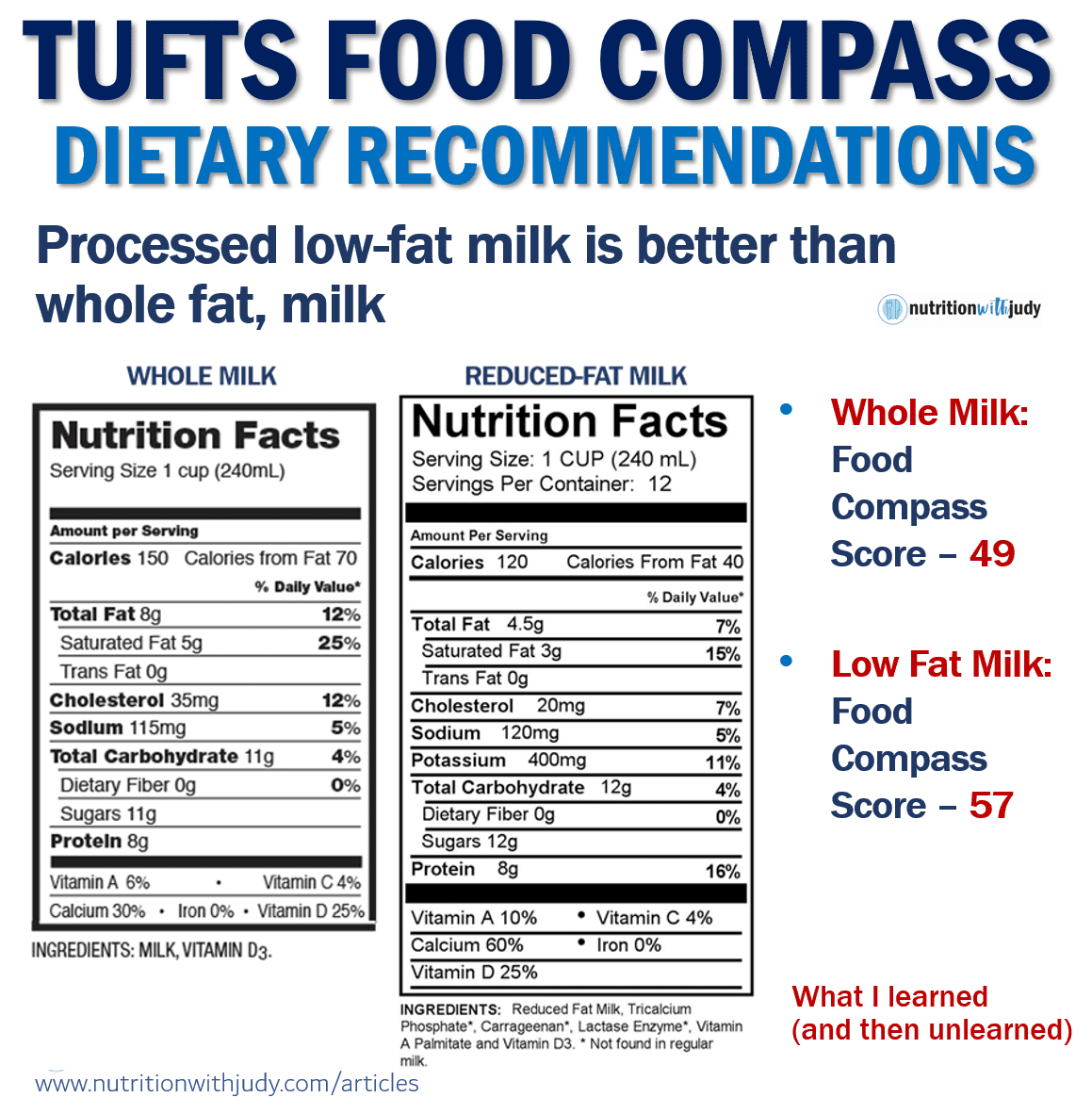

Tufts Food Compass Guide – A Nutritionist’s Review


On October 14, 2021, researchers from the Friedman School of Nutrition Science and Policy at Tufts University released its new Food Compass profiling system based on 8,032 foods.
“Once you get beyond ‘eat your veggies, avoid soda,’ the public is pretty confused about how to identify healthier choices in the grocery store, cafeteria, and restaurant,” said Dariush Mozaffarian, the study’s lead author. (Source)
This same quote was distributed to well over 20 large media outlets. (Source, Source, Source, Source, Source, Source, Source, Source, Source).
Is there confusion?
Yes.
Is the confusion, perhaps, intentional?
Perhaps.
This article may help you make a better-informed decision.
Let’s take a look at this new Food Compass rating system.
FOOD COMPASS GUIDE – WHAT IS IT?
The Food Compass rating system attempts to rate (they call it profiling) foods between 0 – 100 in terms of healthfulness.
The Food Compass nutritional rating system essentially gives consumers a simple way to figure out if you should eat a specific food and how often.
Foods between:
- 70-100 should be consumed often
- 31-69 should be consumed in moderation
- 0-30 should be avoided as much as possible
It’s similar to the Weight Watcher’s point system. Assign a number to each food and determine how often (or how little) you should eat the particular food. And if you follow this method, you will be healthy.
It’s a way to rate foods as good or bad.
For the Food Compass, foods with higher ratings should be eaten more often.
Seems simple enough.
But context matters.
FOOD COMPASS GUIDE – RATING SYSTEM CRITERIA
The Food Compass considered 9 health domains and 54 attributes (Table 1) for its rating system. (Figure 1)
The rating system then gave each food a score from 1 to 100. One being the unhealthiest and 100 being the healthiest foods.
Food information was sourced from National Health and Nutrition Examination Survey (NHANES) and USDA’s Food and Nutrient Database for Dietary Studies (FNDDS) 2015–16.
9 Health Domains (Figure 1) 54 Attributes listed in italics
- Nutrient Ratios
- Unsaturated: saturated fat ratio
- Fiber: carbohydrate ratio
- Potassium: sodium ratio
- Vitamins
- Vitamin A
- B-vitamins
- Vitamin C
- Vitamin D
- Vitamin E
- Vitamin K
- Choline
- Minerals
- Calcium
- Phosphorous
- Magnesium
- Iron
- Zinc
- Copper
- Selenium
- Sodium
- Potassium
- Iodine
- Food-Based Ingredients
- Fruits
- Vegetables non-Starchy
- Beans and legumes
- Whole grains
- Nuts and seeds
- Seafood
- Yogurt
- Plant oils
- Refined grains
- Red or processed meat
- Additives
- Added sugar
- Nitrites
- Artificial sweeteners, flavors, colors
- Partially hydrogenated oils
- Interesterified or hydrogenated oils
- High-fructose corn syrup
- Monosodium glutamate
- Processing
- NOVA classification
- Fermentation
- Frying
- Specific lipids (0.5 weight) (top three)
- Alpha-linolenic acid
- Eicosatetraenoic acid + docosahexaenoic acid
- Medium-chain fatty acids
- Dietary cholesterol
- Trans fats
- Fiber and protein (0.5 weight)
- Total fiber
- Total protein
- Phytochemicals
- Total flavonoids
- Total carotenoids


Graphic: Source
54 attributes (Table 1)
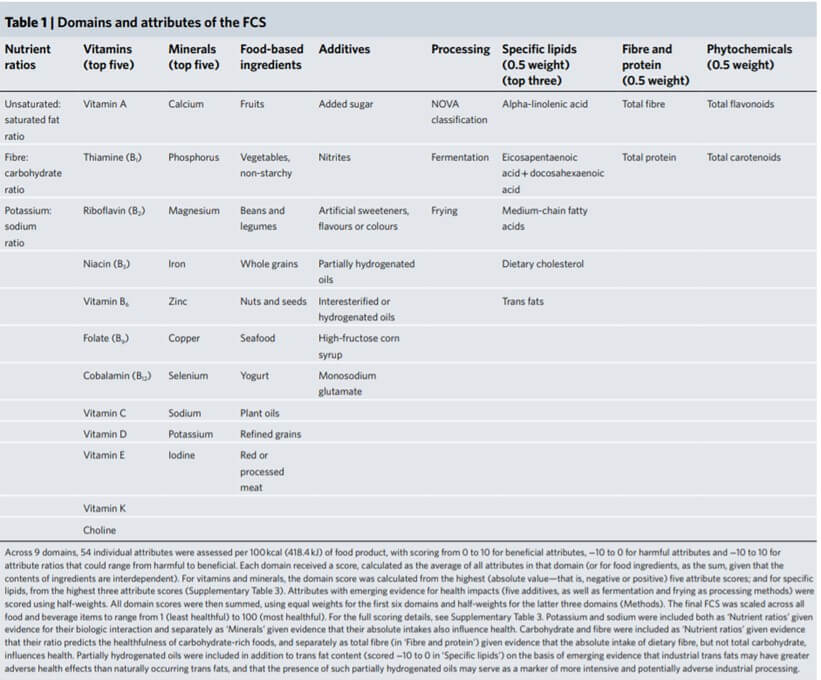

Table 1: Source
At first glance, these domains seem pretty comprehensive as the food profiling seems to consider nutrient-density and additives (read: processing). But the way they rate these attributes is where things get pretty murky.
Per Table 1’s footer description:
“Across 9 domains, 54 individual attributes were assessed per 100 kcal (418.4 kJ) of food product, with scoring from 0 to 10 for beneficial attributes, −10 to 0 for harmful attributes and −10 to 10 for attribute ratios that could range from harmful to beneficial.
Each domain received a score, calculated as the average of all attributes in that domain (or for food ingredients, as the sum, given that the contents of ingredients are interdependent).
For vitamins and minerals, the domain score was calculated from the highest (absolute value—that is, negative or positive) five attribute scores;
and for specific lipids, from the highest three attribute scores (Supplementary Table 3).
Attributes with emerging evidence for health impacts (five additives, as well as fermentation and frying as processing methods) were scored using half-weights.
All domain scores were then summed, using equal weights for the first six domains and half-weights for the latter three domains (Methods). The final FCS was scaled across all food and beverage items to range from 1 (least healthful) to 100 (most healthful). For the full scoring details, see Supplementary Table 3.
Potassium and sodium were included both as ‘Nutrient ratios’ given evidence for their biologic interaction and separately as ‘Minerals’ given evidence that their absolute intakes also influence health.
Carbohydrate and fibre were included as ‘Nutrient ratios’ given evidence that their ratio predicts the healthfulness of carbohydrate-rich foods, and separately as total fibre (in ‘Fibre and protein’) given evidence that the absolute intake of dietary fibre, but not total carbohydrate, influences health.
Partially hydrogenated oils were included in addition to trans fat content (scored −10 to 0 in ‘Specific lipids’) on the basis of emerging evidence that industrial trans fats may have greater adverse health effects than naturally occurring trans fats, and that the presence of such partially hydrogenated oils may serve as a marker of more intensive and potentially adverse industrial processing.” (Source)
FOOD COMPASS GUIDE – CONSIDERATIONS (THE FINE PRINT NUANCES)
While the Compass Guide attempts to profile or rate foods based on the 9 domains and 54 attributes, much of the rating of the 54 attributes becomes subjective. While the researchers attempt to consider emerging evidence (studies, good or bad) and other food rating systems like NOVA classification, the ultimate rating of the 54 attributes is subjective.
1. Subjectivity
There is quite a bit of subjectivity in the definitions. Let’s take the term healthy. The term healthy would be considered if:
Table S2: Summary of Review of Nutrient Content Requirements for U.S. Health Claims (Source)
101.65 Implied nutrient content claims and related label statements You may use the term “healthy” or related terms (e.g., “health,” “healthful,” “healthfully,” “healthfulness,” “healthier,” “healthiest,” “healthily,” and “healthiness”) as an implied nutrient content claim on the label or in labeling of a food that is useful in creating a diet that is consistent with dietary recommendations if:
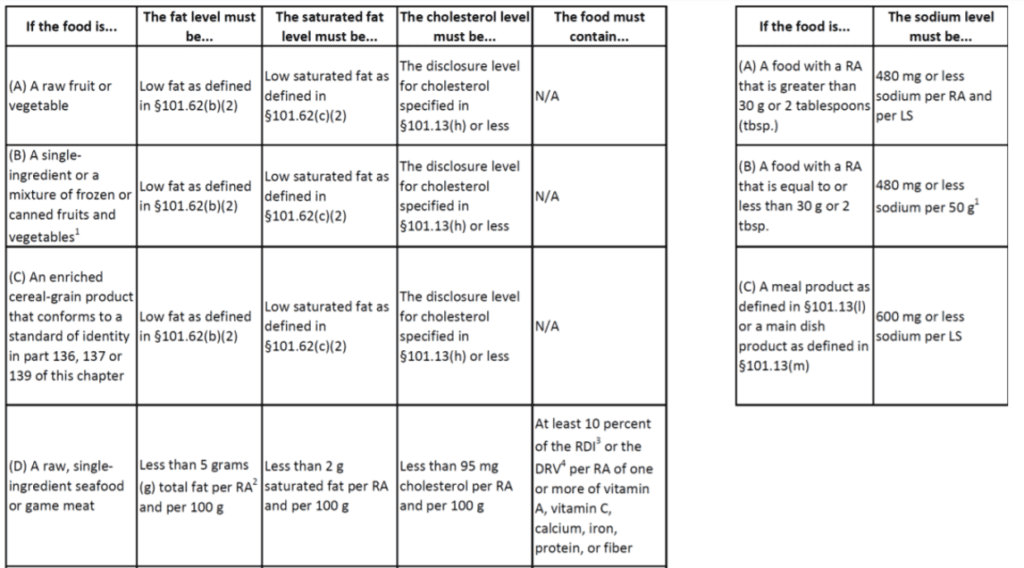

A raw single ingredient, seafood or game meat:
- The fat level must be: less than 5 grams total fat per RA and per 100 g
- The saturated fat level must be less than 2 g saturated fat per RA and per 100 g
- The cholesterol level must be less than 95 mg cholesterol per RA and per 100 g
- The food must contain: at least 10% of the RDI or the DRV per RA of one or more of vitamin A, vitamin C, calcium, iron, protein, or fiber.
Let’s take a look at some examples:
85% lean and 15% fat ground beef
EXAMPLE 1: Ground Beef 85% Lean, 15% Fat — (Food Compass Score: 38)
If we consider raw ground beef 85% lean and 15% fat for 100 g or 3.5 ounces, here’s how the ranking would be considered:
- Calories: 215
- Protein: 18.6 g
- Carbs: 0 g
- Fat: 15 g
- FAIL – the fat is more than 5 g of total fat per 100 g
- Saturated Fat: 5.7 g
- FAIL – the fat is more than 2 g of saturated fat per 100 g
- Cholesterol: 68 mg
- PASS but the amount is closer to the higher range
The food must contain at least 10% of the RDI of one or more:
- Vitamin A: 14 IU
- FAIL – less than 10% of the RDI
- Vitamin C: 0 mg
- FAIL – less than 10% of the RDI
- Calcium: 15 mg
- FAIL – less than 10% of the RDI
- Iron: 2.1 mg
- PASS – more than 10% of the RDI
- Protein: 18.6 g
- PASS – more than 10% of the RDI
- Fiber: 0 g
- FAIL – Less than 10% of the RDI
Raw ground beef of 85% lean passes 2 of the RDI levels of at least 10%. But fails 4. Technically, this should be a PASS as 2 items pass the 10% RDI criteria.
Oddly, these same criteria for ranking, are not used for every single food.
Raw fruits and vegetables, canned vegetables, or grain products don’t have the same RDI requirements. Let’s just do fruit and grain on the nutrient profiles for fun.

EXAMPLE 2: Apple with skin (100 g) — (Food Compass Score : 96)
The food must contain at least 10% of the RDI of one or more:
- Vitamin A: 54 IU
- FAIL – less than 10% of the RDI
- Vitamin C: 4.6 mg
- FAIL – less than 10% of the RDI
- Calcium: 6.0 mg
- FAIL – less than 10% of the RDI
- Iron: 0.1 mg
- FAIL – less than 10% of the RDI
- Protein: 0.3 g
- FAIL – less than 10% of the RDI
- Fiber: 2.4 g
- PASS – 10% of the RDI
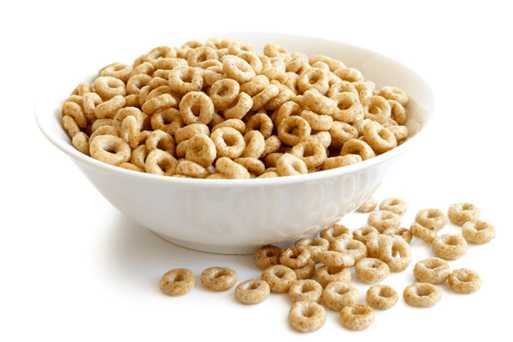

EXAMPLE 3: Cheerios, Plain (100 g) — (Food Compass Score : 95)
The food must contain at least 10% of the RDI of one or more:
- Vitamin A: 1786 IU
- PASS – more than 10% of the RDI
- Vitamin C: 21.6 mg
- PASS – more than 10% of the RDI
- Calcium: 357.0 mg
- PASS – more than 10% of the RDI
- Iron: 28.9 mg
- PASS – more than 10% of the RDI
- Protein: 12.1 g
- PASS – more than 10% of the RDI
- Fiber: 9.4 g
- PASS – more than 10% of the RDI
While cheerios seem like the winner, context matters.
Remember that most of the vitamins and minerals in cheerios are fortified. Just because a product has added synthetic vitamins and minerals, there is no guarantee they are being broken down, absorbed, and utilized by the body. (Source, Source)
You can also overdo (become toxic with) some stored vitamins like vitamin A, D, E, K, B6, and B12. (Source)
Yes, cheerios are also high in B-vitamins.
Cheerios has been found to use real metal shavings for iron. (Source, Source)
Cheerios have also been found to have glyphosate. (Source) If you think that glyphosate isn’t dangerous in small amounts, I recommend reading Dr. Stephanie Seneff’s, Toxic Legacy: How the Weedkiller Glyphosate is Destroying Our Health and the Environment.

EXAMPLE 4: Oat Flour Whole Grain— (Bread, Whole Grain — Food Compass Score: 62)
The food must contain at least 10% of the RDI of one or more:
- Vitamin A: 0 IU
- FAIL – less than 10% of the RDI
- Vitamin C: 0 mg
- FAIL – less than 10% of the RDI
- Calcium: 52 mg
- FAIL – less than 10% of the RDI
- Iron: 4.3 mg
- PASS – more than 10% of the RDI
- Note that this is non-heme iron
- Protein: 13.2 g
- PASS – more than 10% of the RDI
- Fiber: 10.1 g
- PASS – more than 10% of the RDI
Whole grain with less processing shows a more representative depiction of how the body may actually utilize real-food nutrients. As an aside, while iron is high, grains tend to have antinutrients that bind to minerals. Whole grain also has non-heme iron, which is much harder to absorb by the body than heme-iron.
2. Considers Emerging Evidence but Not For Fat

By now we know that fat isn’t a bad thing. And I really shouldn’t have to argue that with the main researcher, Dariush Mozaffarian, as he wrote papers on fat being a good thing. (Source, Source, Source, Source, Source)
In 2010, his talk at the International Symposium on Saturated Fat says that “saturated fat is not much of a risk factor in heart disease, and neither is naturally prepared red meat. But trans fats are a risk, and so are refined carbs.” (Source).
I wonder what made him change his opinion on saturated fats. (more on this later).
3. Phytochemicals including Flavonoids – Not Always a Good Thing
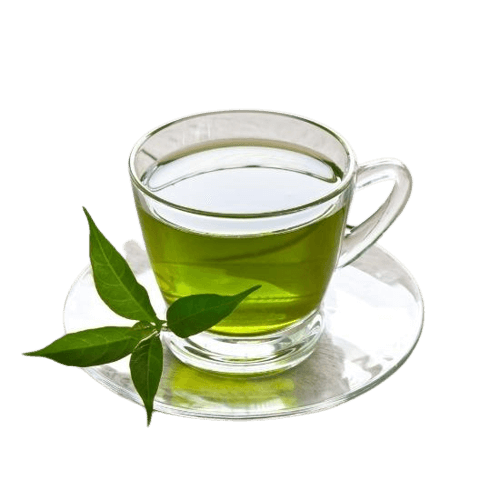

If food has flavonoids and carotenoids, they were given points on the Food Compass profile. This is where again, context matters.
I wrote a blog post several years ago about the Dark Side of Plants. Flavonoids are a part of the polyphenol family. They are found in tea, coffee, and some whole plants. Flavonoids can inhibit mineral absorption.
According to Linus Pauling, flavonoids can bind to non-heme iron, inhibiting intestinal absorption. So what happens when you drink tea or coffee with your spinach or cheerios? (Source)
Polyphenols known as phytochemicals are anti-nutrients that are touted for their health benefits. Dark chocolate, flaxseed meal, cocoa powder, and many fruits and vegetables contain polyphenol compounds.
Polyphenols may have some health benefits, such as possible body weight regulation and decreasing blood pressure, but there are studies on high doses of polyphenols causing kidney damage, tumor development and altered thyroid hormone production. (Source, Source).
Considering bio-individuality, someone with kidney disease or anemia may do better without consuming too many flavonoids.
4. Phytochemicals including Carotenoids – Not Always a Good Thing
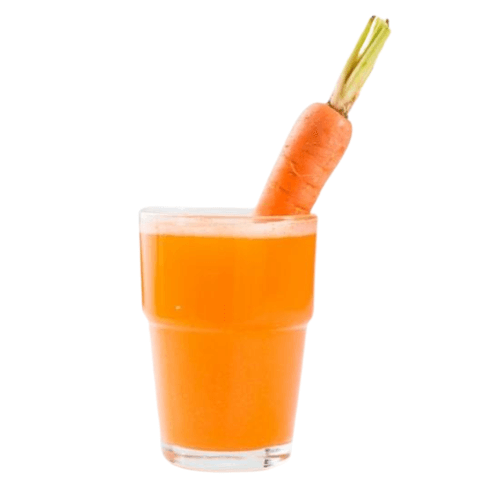

Ever hear of people drinking too much carrot juice and turning orange? (Source, Source)
It’s the beta-carotene or carotenoids.
Carotenoids give the yellow, orange, and red pigments in most plant-based foods. It’s also in seafood. Carotenoids are touted for their antioxidant effects but if you read Carnivore Cure, you know that too many antioxidants can have a pro-oxidant effect too.
Antioxidants that turn into pro-oxidants can cause oxidative stress. We like antioxidants because it helps reduce oxidative stress within the body. Pro-oxidants create reactive oxygen species or inhibit antioxidant functions. Pro-oxidants can damage cells and tissues. (Source)
Now carotenoids eventually get converted into some form of usable vitamin A in the body. The issue is that our government mandates the adding of vitamin A to our grains, milks and other food products. But vitamin A is also rich in eggs and in forms like beta-carotene (carotenoids).
There are hundreds of studies showing vitamin A toxicity, whether from plants, meats and/or supplementation is a serious matter. You can read my article about vitamin A toxicity here. Many references are shared. (Source)
Most of our vitamin A gets stored in our liver. If you don’t have good liver function, carotenoids may not be a good thing. If you ever took retinol, carotenoids may not be ideal.
Context matters. To give carotenoids a flag of health is less than ideal.
Something to consider: The FDA has removed vitamin A and vitamin C from nutrition fact labels as both of these deficiencies are rare today. If these nutrient deficiencies are rare, why are we considering it in the Food Compass rating as an ideal attribute? In a land of plenty, we should also begin to consider risks of excess and toxicity. (Source)
5. Other Notables
- Light and lower fat is rated higher.
- Often times lower-fat varieties add sugar.
- Fiber is rated higher.
- Low sodium is rated higher.
- Nutrient density is rated higher.
- However, this does not differentiate between food macros and synthetic vitamins. The criteria for fruits and vegetables should differ compared to whole food meats. They are not made from the same macronutrients and they are not intended to do the same things in the body.
- And considering nutrient density, the ratings should vary by food-type. Fruits and vegetables should have a different rating for nutrient density, that considers carbs vs. fiber, nutrients vs antinutrients and more. Meats should be rated by nutrient density that includes complete proteins, different fatty acids and more.
- The healthy factor for flavonoids and carotenoids can be argued.
FOOD COMPASS GUIDE – THE SCORING
The 8,032 items were ranked (profiled) based on the 9 health domains and 54 attributes aforementioned. Below is Figure 2 from the study, which shows a summary view of the results.


Source: Figure 2
You can the scoring is flawed when you see individual items.
And while the “Food Compass Food Score Examples” graphic has been shared for highlights of the Food Compass ratings, the devil is in the details. (Source, Source)


Graphic: Source
Here are Some Scoring Highlights:
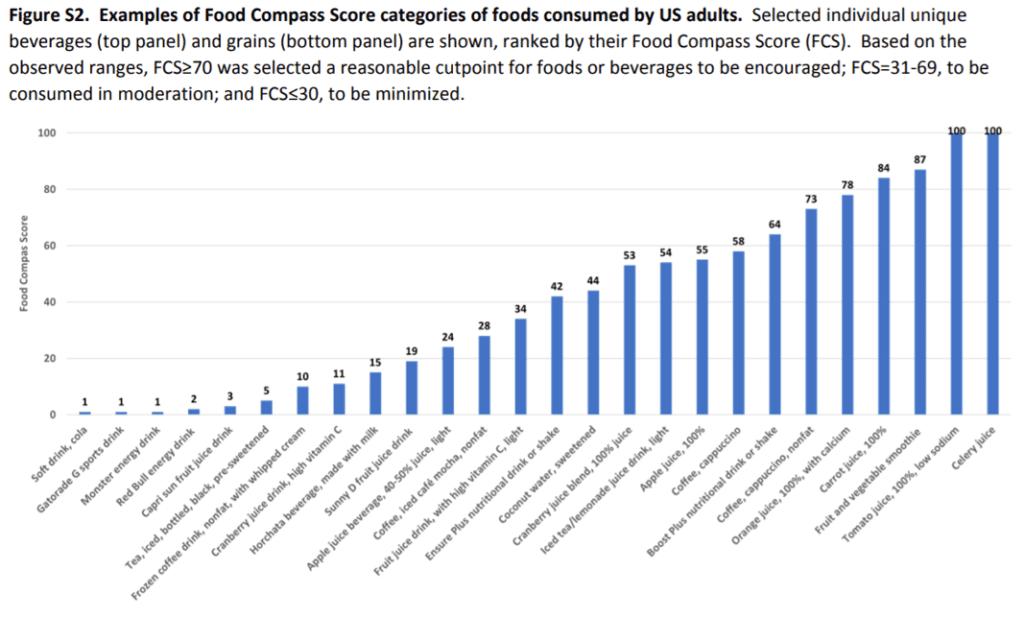

Figure: Source
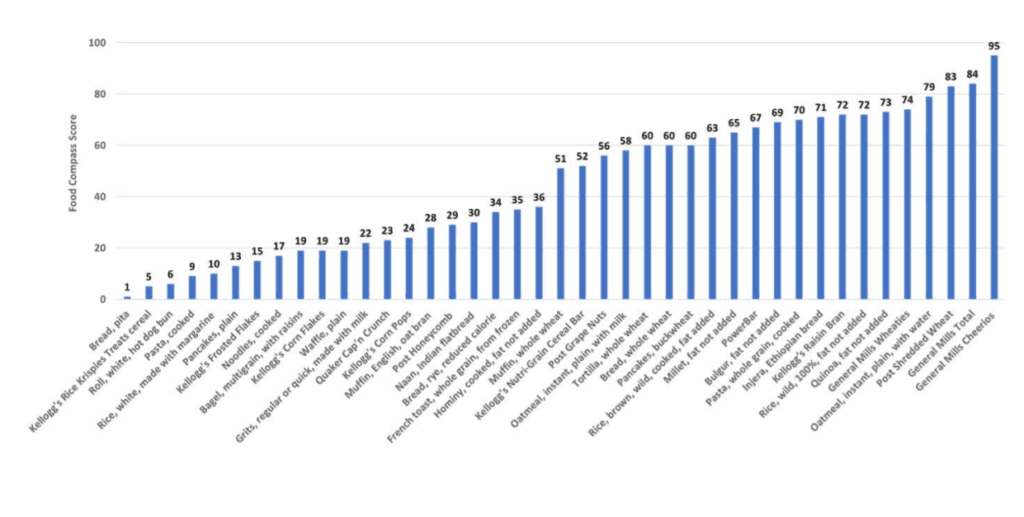

Figure: Source
Recall the Ratings:
- 70-100 should be consumed often
- 31-69 should be consumed in moderation
- 0-30 should be avoided as much as possible
- Grains
- Cereal, Uncle Sam – 100
- Cereal, General Mills Cheerios – 95 (Food Compass Score – FCS)
- Bread, Multigrain – 63
- Waffle, whole grain – 42
- Rice, white cooked – 1
- Vegetables
- In raw form, almost all are 100
- Any fat added lowered the score
- Peas, green raw – 100
- Lima beans, dry, fat not added in cooking – 99
- Lima beans, dry, cooked, made with margarine – 83
- Lima beans, immature, fresh, fat not added – 69
- Lima beans cooked with animal fat or meat drippings – 62
- Lima beans, immature, fresh, made with margarine – 60
- Lima beans, immature, fresh, made with butter – 43
- Meatball meatless – 65
- Peas, dry cooked with pork – 65
- Cassava cooked with butter – 14
- Pickles, mixed – 1
- Legumes, Nuts
- Most whole nuts and seeds are 100 (unless fat is higher)
- When salt or fat is added, points are deducted
- Macadamia nuts – 72
- Beans and franks – 25
- Meat, Poultry, Eggs
- Chicken liver, braised – 73 (highest meat rating)
- Beef liver, braised – 64
- Egg yolk only, raw – 61
- Chicken without skin – 59
- Beef liver, fried – 58
- Chicken drumstick with skin, baked from raw – 48
- Beef, roast, canned – 43 (highest rating of beef muscle meat)
- Chicken nuggets from school lunch – 43
- Ground beef, raw – 38
- Pork chop, baked, no salt – 36
- Bison, cooked – 36
- Beef, lean, no salt – 33
- Egg, whole, fried with butter – 29
- Lamb, shoulder chop – 25
- Beef jerky – 11
- Fish
- All fish raw, tuna, salmon, halibut, oysters – 100
- When salt, fat or cooking methods are added, points are deducted
- Shrimp, coated, fried, made with butter – 24
- Meatballs with sauce – 19
- Dairy
- Plain, non fat yogurt – 95
- Almond milk unsweetened, chocolate – 95
- Hot cocoa made with no sugar added dry mix with fat free milk (Nesquik) – 72
- Milk evaporated, fat free (skim) – 56
- Milk, whole – 49
- Buttermilk, whole – 43
- Most common cheeses – 30s
- Coconut milk – 4
- Fats Oils
- Canola, soybean, sunflower oil – 90
- Vegetable oil – 89
- Olive oil – 85
- Margarine unsalted – 58
- Sour cream – 30
- Butter-margarine blend (or vegetable oil blend) – 28
- Lard – 19
- Animal fat or drippings – 11
- Butter – 5
- Coconut oil – 4
- Cream cheese – 3
- Honey butter – 1
FOOD COMPASS GUIDE – DIETARY RECOMMENDATIONS
- You should limit fats from animals but can eat all the canola and vegetable oil you want.
- Canola oil should almost never be consumed. You can read more here.
- Meatless meats are better than natural meats
- You can read my post on Beyond Meat, here.
- You can eat these savory-sweet foods often (see image below) but limit meat-intake


Table: Source
- Drink your meals


Table: Source
- Eat cereal often


Table: Source
- Processed fruits and sugar are better than most whole grains, meats, and dairy


Table: Source
- Low fat nutrient-poor trumps nutrient density (see Lettuce at 66)


Table: Source
One More Example (Let Nature Be)
- Whole milk – 49
- Low-fat milk – 57
Something to consider: There is no natural low-fat milk. (Take a look at the ingredients)


While the reduced-fat milk seems better in terms of nutrients (and if you consider lesser fat to be ideal), these nutrients are fortified. They often do not absorb the same as nature’s version of whole milk.
And because the fat is above the 10% RDI, whole milk loses rankings.
Can we really consider milk that has added carrageenan better than whole milk?
Carrageenan is added to thicken, emulsify and preserve drinks. For some people, carrageenan is a sensitivity and why some elimination diets like Whole30 and organic-labeled foods do not allow for carrageenan.
The Food Compass ranks non-natural milk as superior to whole milk. This doesn’t even consider issues with pasteurization. You can read several of my dairy articles, here, here, here, and here).
You can read more of Dr. Dariush Mozaffarian’s published studies, here.
CONFLICT OF INTEREST, POSSIBLY?
I did some research on Dr. Dariush Mozaffarian. He is the main point of contact for the Food Compass research.
When you read his dietary opinions in this article, it shows where his nutritional beliefs stand.
Here are some of the headliners (source):
- Beef production is devastating the environment
- If you’re concerned about meat and climate change, you can read some thoughts here.
- Plant-based meats are better for the environment
- Processed meats are bad for health
- Grass-fed beef isn’t better for your health
- Red meat isn’t good for health
Now I was surprised to see some research papers written about his support for fats as fat is less than ideal in the Food Compass Rating unless it’s from vegetable oils.
Now I chose to discuss the Food Compass nutrient profiling system first without any discussion on the conflict of interest.
That would be only fair.
And thus far, I have shared some of the gaps with the rating system.
So now let’s talk about some of the potential conflicts of interest. I want to note that this is some preliminary research and not a deep dive into any of the companies and their partnerships.
Competing Interests
Per page 10 of the Nature Food paper, “D.M. receives personal fees from Acasti Pharma, Barilla, Cleveland Clinic Foundation, Danone and Motif FoodWorks; is on the scientific advisory boards of Brightseed, Calibrate, DayTwo (ended June 2020), Elysium Health, Filtricine, Foodome, HumanCo, January Inc., Perfect Day, Season and Tiny Organics; and receives chapter royalties from UpToDate. J.B.B. reports personal fees from Guiding Stars Licensing Company. All other authors declare no competing interests.” (Source)
So I looked into each company and here are some highlights for Dr. Dariush Mozaffarian’s funding:
- Acasti Pharma: Dr. Dariush Mozaffarian is part of the scientific advisory board for the pharmaceutical company. They seem to fund several of his research papers. (Source, Source)
- Barilla: World’s Largest Pasta Company
- Cleveland Clinic Foundation: in 2020, a Cleveland Clinic researcher who received more than $3.6 million in NIH grants is facing criminal charges for failing to disclose ties with the Chinese government. (Source)
- Danone: 52% of sales come from dairy and plant-based products. 2nd world’s largest manufacturer of baby food. Partners with Kraft foods for some products. (Source)
- Thought: Can this play any part in why processed yogurt performed high on the rankings?
- Motif FoodWorks: Plant-based food technology company (Source)
- Brightseed: Forager® is the world’s first and only artificial intelligence to map millions of bioactive natural compounds and make new connections between the natural world and human health. Forager has analyzed over 700,000 compounds for their health properties and is on track to surpass 10 million by 2025. Our science team leverages the most advanced computational biology and plant processing techniques to develop “molecular signatures” of all of the plants in the edible and medicinal plant kingdom. (Source)
- Calibrate: Diet program coupled with medication (Source)
- Filtricine: Clinical stage biotechnology company focused on developing novel products for cancer management. “In order to help cancer patients easily get sufficient sources of nutrition when eating isn’t easy, we developed a Tality™ branded line of convenient foods, including nutritious shakes, soups and bars.”
- You can read a clinical trial of their synthetic food (Source)
- Perfect Day: Animal-free milk protein ice cream (bioengineered dairy protein) (Source)
- Tiny Organics: Plant-based organic baby food (no meat) (Source)
He has more endorsements here, albeit a different study. But there are some similar players that support Dr. Dariush Mozaffarian.
Two to note are the Nutrition Impact, Pollock Communication, and GOED, The Global Organization for EPA and DHA Omega-3s. (Source, Source).
Now I am a big advocate of consuming fatty fish such as salmon, salmon roe, and sardines but I wonder if previous sponsorships had any shifts in the rankings.
The ranking doesn’t make sense for fish.
My reasoning is because total fat in 100 g of fish, exceeds the 10% RDI value.
- Salmon, Raw – 100
- Salmon with margarine – 89
- Salmon smoked (salt) – 86
- Salmon, baked or broiled, made with butter – 75
With peas or lima beans mentioned earlier, any addition of butter or fat dramatically lowered the FCS score. But with salmon, no additional fat or salt made the salmon drop to a lower category. Even with butter, we are recommended to eat salmon daily or often.
Interestingly, raw salmon with an FCS of 100 and butter with a score of 5 would average to FCS of 52.5. I’m sure the weighing of the domains and attributes differ but it’s still interesting.
There are obvious theories and musings in this competing interest section but when many of the companies that support Dr. Dariush Mozaffarian are plant-based and processed food-friendly, did it have zero impact on the Food Compass ratings?
In psychology, whenever a favor (gift, act, money) is exchanged, the human tendency of reciprocity exists. As human beings we feel compelled to reciprocate and repay (in whatever form that may be). It is considered a survival value in humans. (Source)
Just some thoughts but interesting nonetheless.
CLOSING THOUGHTS
The Tuft’s Compass System admits to flaws in most Nutrient Profiling System (NPS) models. From a WHO study of multiple NPS models, 84% had no mechanisms for validation—no validation of criteria or content.
While the Compass System can be viewed as the beginnings to find a proper nutrient profiling system, one that considers nutrient density and considerations of additives such as monosodium glutamate, we still have a long way to go. We can do better. (Source, Source)
We must do better.
It’s a bit nonsensical to think that fruits would have fat and meats would have fiber. The rating system for different food groups should differ based on the purpose of the foods.
Proteins are important for the role of amino acids. We should consider proteins for their nutrient density:
- Complete amino acid
- Consider PDCAAS, DIAAS ratings for proteins
- Profile of essential vitamins and minerals (K2 vs K1, heme-iron vs. non-heme iron)
- Fortified, synthetic, or natural vitamins and minerals
- Cured and processed meats should not be grouped into real food unadulterated meats
Carbohydrates are important for well, not much. But if we consider them important, we should consider their nutrient density:
- Sugar vs. fiber content
- Seasonality
- GMO vs. Organic
- Antinutrients vs. nutrients
- Profile of essential vitamins and minerals (iron vs. oxalate count that bind to iron)
- Glycemic index and glycemic load
- Fortified, synthetic or natural vitamins and minerals
Fats are critical for every cell’s membrane (biphospholipid bilayer) and are required for steroid and sex hormones. We need additional cholesterol from dietary sources to handle the stress load in our modern lives.
Cholesterol may be at the crime scene of heart disease but it’s not the root cause. We know that and why in 2015, the U.S. Dietary Guidelines removed the upper limit for cholesterol. (Source, Source, Source)
- Different fat considerations: Omega 3s, Omega 6s, PUFAs, MUFAs, Saturated Fats, Trans Fats
- Processing and oxidation of fats
- Refined vs. unrefined
- Fat sourcing (rapeseed plant vs cow’s kidney fat—suet)
- Ratings considering health benefits such as with conjugated linoleic acid
- Fortified, synthetic, or natural vitamins and minerals (fish oil is less ideal than eating fatty salmon)
And while these are considerations I can quickly list off; all of these considerations do not consider the specific individual needs.
Context matters.
A 20-year-old, active athlete should have different food recommendations than a 55-year-old type 2 diabetic. For an older type 2 diabetic, considering the fructose load in fruit is absolutely critical. Or for anyone suffering from non-alcoholic fatty liver disease.
While the Food Compass would rate most fruits as 100 and recommended to be consumed often, for a type 2 diabetic that is struggling with hot flashes from menopause, recommending more than 2 fruits a day and limiting fats rich in cholesterol, is irresponsible.
For a type 2 diabetic menopausal woman to hand off the hormone production from the ovaries to the adrenals, she needs to reduce the cortisol load from excess glucose (and insulin).
She should eat more cholesterol to support cortisol and other sex hormones. She should limit excess sugars—even from fruits—to better balance the hypoglycemic responses with cortisol.
The Food Compass and its dietary considerations are, unfortunately, confusing to a diabetic. The Food Compass does not do any justice to this confused population—a population of 34.2 million diabetics and 88 million prediabetics. (Source)
We can do better.
w️ith ♥ and hope for healing,


DISCLAIMER: The content is for educational purposes only. While I am a nutritional therapy practitioner, I am not providing medical advice. Whenever you start a new diet or protocol, always first consult with your trusted practitioner.



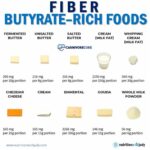
Daisy
November 15, 2021 at 7:37 pmYou put so much work, time and energy into your articles! I really appreciate your thorough research and source listing. The Tufts Food Compass guide is the same old rubbish they’re always shoving in our faces. Not that I would normally pay any attention to anything Nature publishes, some people do and it still helps form general opinion and societal ideas about health foods, which affects us all.
gun
May 17, 2022 at 8:42 amyou mistyped the year 2105 should read 2015 at the end in a sentence on cholesterol , don t know if that corrects easy , gun
Nutrition with Judy
May 17, 2022 at 9:09 amThank you, made the change. Very much appreciated!
Philip
July 26, 2022 at 11:54 amFreaking excellent article. Thanks
Jenn
March 6, 2023 at 8:44 amThe food compass has proven to be a total joke. But it is also terribly sad because uninformed people will once again take the government’s recommendations for health as good and true and will suffer for it. When you tell people they need to do their own research they mock you, but it’s just the reality of the day. Look where low fat, high carb has gotten us! It’s a shame really. The best thing about the food compass is it has shown us what a farce the government is when it comes to health recommendations.
prsmith
June 15, 2023 at 12:48 pmYep, we are our own worst enemy.
prsmith
June 15, 2023 at 1:27 pmIt is absolutely critical that we take influential money out of science (and politics and the media) if we’re ever to get truthful results/information. It is up to us to figure out how to fund science without influencing results. Adding a penny or two to every product we buy (controlled and distributed by ???) might be a good solution. Prohibiting the publishing of research results from researchers who receive funding from sources that produce conflicts of interest until those findings are verified by further research might help.
Politicians with conflicts of interest should be excluded from votes concerning that subject. That will require legislation…or a constitutional amendment. Can we accomplish that?
We control the media already. Turn them off. Don’t read or watch anything until they eschew their conflict of interest funding and stop lying to us…and stop funding their sources!